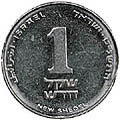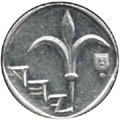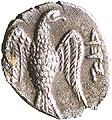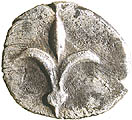
 After having enjoyed for many years one of the fastest GDP growth rates among world economies, Israel is continuing the economic recovery it began in 2003, after a two-year distinct slowdown in almost all economic activities. This trend continued in 2007, according to all economic parameters. In the years 2006-2007, Israel’s gross domestic product (GDP) continued its rapid growth, reaching 5.1 percent in 2006, in spite of the Second Lebanon War, which caused a temporary loss of 0.7% of the GNP. The speedy recovery and the continuation of the rapid growth were again led by the business sector, which expanded by 6.4 percent, resulting in a $20,138 per capita GDP in 2006.
After having enjoyed for many years one of the fastest GDP growth rates among world economies, Israel is continuing the economic recovery it began in 2003, after a two-year distinct slowdown in almost all economic activities. This trend continued in 2007, according to all economic parameters. In the years 2006-2007, Israel’s gross domestic product (GDP) continued its rapid growth, reaching 5.1 percent in 2006, in spite of the Second Lebanon War, which caused a temporary loss of 0.7% of the GNP. The speedy recovery and the continuation of the rapid growth were again led by the business sector, which expanded by 6.4 percent, resulting in a $20,138 per capita GDP in 2006.
In 2006-2007 Israel continued to achieve its main macroeconomic objectives: a very low, sometimes even negative rate of inflation, a very low budget deficit, and a limited increase in public expenditure. At the same time, Israel continued to attract foreign investments as well as enjoying a rapid growth in exports and a positive trade balance for the first time. These trends continued in the first half of 2007 and the forecast for the whole year was of continued economic growth with no inflation, a low budget deficit, and economic stability on all fronts.
With a population of more than 7 million, Israel has been internationally acclaimed throughout the years, in particular for its extraordinary achievements in agriculture and agrotechnology, irrigation, solar energy, and in many hi-tech industries and start-ups. Based on intensive R & D, even in traditional industries, Israel today is not only the land of milk and honey but also the land of hi-tech, including software, communications, biotechnology, pharmaceuticals, and nanotechnology.
Free-trade agreements reached over the past three decades with the United States, the European Union and several countries in Latin America have facilitated Israel’s expanding exports of goods and services – more than $60 billion in 2006 – as well as its participation in international business enterprises that contributed to the country’s accelerated growth.
The shekel – Israeli currency
The shekel, Israel’s unit of currency (valued at $0.24 in July 2007), was known as early as the second millennium BCE as a unit of weight for means of payment in gold and silver. It is recorded in the Bible that Abraham negotiated the purchase of a field “and a cave that was therein,” at Machpela (in Hebron) saying: “I will give thee money for the field; take it of me, and I will bury my dead there. Ephron, the land-owner, replied: the land is worth four hundred shekels of silver… and Abraham weighed to Ephron four hundred shekels of silver, current money with the merchant.” (Genesis 23:13, 15-17)
Currency emitted by the Bank of Israel, 1985:
Jewish currency of the centuries 6th-4th AEC:

Front 1 new shékel

Rear: Flor de lis, “Yehud” in Hebrew old.

Front Aguila, “Yehud” en Hebrew old

Rear: Flor de lis.

